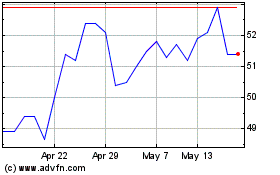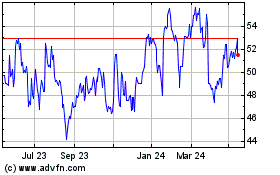At the share price of 63.00p, our dividend gives investors a
return of 7.2% which I believe to be extremely attractive, not
least when contrasted with that obtainable from overnight bank
deposit rates of less than 1% and 10 year government gilt yields of
around 2%.
CORPORATE GOVERANCE
The membership of the Board remained unchanged during the year.
I accepted the privilege of succeeding David Moore as Chairman on
24 May 2011.
During the year we have, as usual, completed a review of the
performance of the Board (both collectively and individually). We
also established and held meetings of formally constituted
Nomination, Remuneration, and Management Engagement Committees. The
Audit Committee continued its work under the firm chairmanship of
Susie Farnon. The Valuation Committee completed reviews of our
Independent Valuer's reports and held meetings with them to obtain
a full understanding of their approach to the portfolio.
OUTLOOK
I believe the Company is well positioned to maintain an
attractive income flow. There needs to be sustained positive growth
in the UK economy before we can expect commercial property values
to rise materially. In the mean- while, good fund management,
astute estate and asset management should produce positive
results.
I believe that during 2012 we will see some worthwhile
opportunities to invest further in the market, but we will only
make acquisitions where we are happy with the stability and
prospects of an asset.
On a more aspirational note and longer term basis, the Board
holds the view that with the help of our managers, it should seek
the added flexibility and enhanced market share that would flow
from the fund's net assets exceeding GBP100m, and we will seek
attractive opportunities.'
Jason Baggaley, on behalf of Investment Manager, stated:
'UK Real Estate Market 2011
UK Real Estate recorded a credible performance in 2011 given the
wider market volatility and on-going problems in the Euro zone.
According to the IPD Quarterly index, total annual returns for UK
real estate were 7.8% in 2011. This was below Gilts at 15.6% but
ahead of equities at -3.5%. The majority of the return came from
income at 6.0% over the year with capital growth broadly accounting
for the remainder of the return. The Company had a higher income
return than the index at 7.6% reflecting its purpose of providing
shareholders an attractive income return. A distinct theme over the
year was for the increase in capital values to moderate each
quarter. Capital values declined in the last quarter of the year
and this was most pronounced for retail and industrial assets with
offices being more resilient mainly due to a stronger performance
for Central London assets over the year.
Liquidity was reasonable over the year with approximately
GBP33bn of transactions during 2011, broadly in line with the level
of transactions in 2010. Overseas investors were particularly
active accounting for around a third of all transactions and just
under two thirds of all deals in Central London. The listed sector
and institutions were the other main purchasers over the year with
private property companies, occupiers and banks the main sellers.
Again this year, the market was polarised between prime and
secondary assets and regionally split between South and North.
Prime assets held up best over the year and have been viewed as a
"safe haven" given the wider market turmoil. Pricing for these
sectors is understandably looking stretched and pricing in sectors
that have recovered the most since the market rallied, i.e. central
London offices, could be vulnerable if yields on other assets were
to rise sharply. The markets view at present is that comparable
government bond yields are likely to remain at low levels for some
time yet.
On a relative basis, UK commercial property continues to look
fairly valued. With initial yields at 6.2% at end December and
longer term government Bond yields at close to 2%, the additional
yield margin real estate offers over government bonds remains close
to 400 basis points. The additional quantitative easing delivered
in February is likely to keep bond yields depressed unless
international investors lose faith in the UK government's
willingness to manage public debt effectively. At present, this
looks unlikely. As mentioned earlier, some parts of the market look
expensive when compared to their historical average and pricing in
these sectors may soften a bit as a result. Secondary assets
pricing is looking compelling in some sectors given the elevated
margins, however, pricing is likely to moderate further in these
sectors due to the weak economic fundamentals and hence stock
selection is absolutely key to identifying undervalued assets where
the pricing reflects the risk to future income in this part of the
market.
Investment Management Strategy:
Income was the Company's main contributor to total return in
2011 at 7.6%, with capital values declining slightly by 1%. We
expect income to remain the main constituent of total return in
2012 and therefore throughout 2011 we continued to focus on income
as the general economic environment worsened. The activity that we
undertook in 2011 (as described below) has been to protect future
income and we secured 78% of the income at risk through lease
expiries and breaks in 2012 and 2013, and in 2012 we will continue
to look at ways of securing future income and maximising value to
our shareholders.
Purchases:
The Company acquired three properties during 2011 for a total of
GBP22.2m. Our strategy in purchasing new investments is to acquire
good quality modern properties in strong locations, let to secure
tenants. We are less concerned about lease length, as the high
yield attainable for shorter leases is attractive, and as the lease
restructuring we undertook in 2011 demonstrates, many occupiers
will remain in their existing property by choice at lease end if it
meets their occupational needs. We seek to maintain diversity of
location, tenant, and lease expiry risk, as well as asset type.
Bourne House Staines: The purchase of this property completed in
January 2011 for GBP8.83m, reflecting an income yield of 9.2%. The
26,500sqft office is let to UB Group until 2016, and is in a good
location in Staines with strong tenant demand.
1 Dorset St Southampton: The purchase of this 25,000sqft office
completed in July 2011 for GBP6.4m, reflecting an initial yield of
7.9%. The property was built in 2007 and is let to Grant Thornton,
Santander, and Michael Page. The property is well located in
Southampton and is one of the most modern offices in the City.
Explorer Crawley: We completed the purchase of this 46,000sqft
office in September 2011 for GBP7.03m, reflecting a yield of 9.2%.
The property is let to three tenants Amey, Grant Thornton and Trade
Skills 4 U Ltd and was built in 2002. Amey had just taken a new
lease and were fitting out the office when we acquired the
investment - they have consolidated several offices into this
location.
Disposals:
We continued our policy of selling smaller assets that have poor
return expectations, or larger assets where we want to realise the
profit from purchase.
Eurolink 31 Normanton: We completed the sale of this multi let
industrial estate located close to Wakefield in July 2011 for
GBP2.2m, a yield of 9.7%. The multi let property had short leases
and we were concerned at the future security of income.
Northern & Shell Tower Docklands: We completed this sale in
December 2011 for GBP12.2m, a yield of 7%. The property is located
in a secondary location in the Docklands and is let until 2022. We
purchased this property in 2009 for GBP10m, a yield of 8.6%, and
felt the time was right to realise the profit and recycle the
capital.
Lister House Leeds: Although the sale completed in January 2012
we exchanged on this sale in December 2011. The sale price was
GBP1.03m, (a yield of 15.6%) and reflected the very short income
duration and poor re- letting prospects.
Portfolio Valuation:
The Company's investment portfolio was valued throughout 2011 by
Jones Lang La Salle. At the year end the Company's real estate
assets were valued at GBP162.1m and the Company held cash of
GBP17.8m (the high cash level was due to the sale of Northern &
Shell Tower in the Docklands for GBP12.2m in December 2011). The
investment portfolio's initial yield at the year end was 7.5%
(compared to 7.8% at end 2010).
Asset Management:
During 2011 capital growth was muted, and returns were dominated
by income. We expect this to continue in 2012. As a result we take
an active approach to securing income, and over the course of 2011
secured 78% of the income at risk through lease expiries and breaks
in 2012 and 2013. By securing the future income streams the Company
was able to grow the dividend whilst maintaining its fully covered
position.
The Company has an average unexpired lease term to earliest
termination date of 7.5 years as at December 2011. Only 5.8% of
total rental income remains subject to a lease expiry or break in
2012 / 2013, with the majority of the short term events being in
2014 and 2016, when we expect a stronger economic environment and
continued low supply of good quality accommodation. There has been
a consistent trend over the last decade to shorter leases, with
most new leases on second hand accommodation having a break in year
5. The Company has a longer average lease length than several of
its peers, and takes an active approach to understanding its
tenants needs and managing future lease events.
Voids increased over the reporting period despite our best
efforts to 5.1% from 3.3%. Although we completed several lettings
during the year, we suffered two tenant failures in particular
(Focus and John Peters Furniture), that represent 60% of the voids
by rental value. The Company had seven void units as at end 2011.
One has been let after the reporting period, and the second largest
void is under offer. We are in the process of changing the planning
consent on the largest void to increase its appeal, and continue to
actively market the other units.
Abrdn Property Income (LSE:API)
Historical Stock Chart
From Jun 2024 to Jul 2024

Abrdn Property Income (LSE:API)
Historical Stock Chart
From Jul 2023 to Jul 2024
